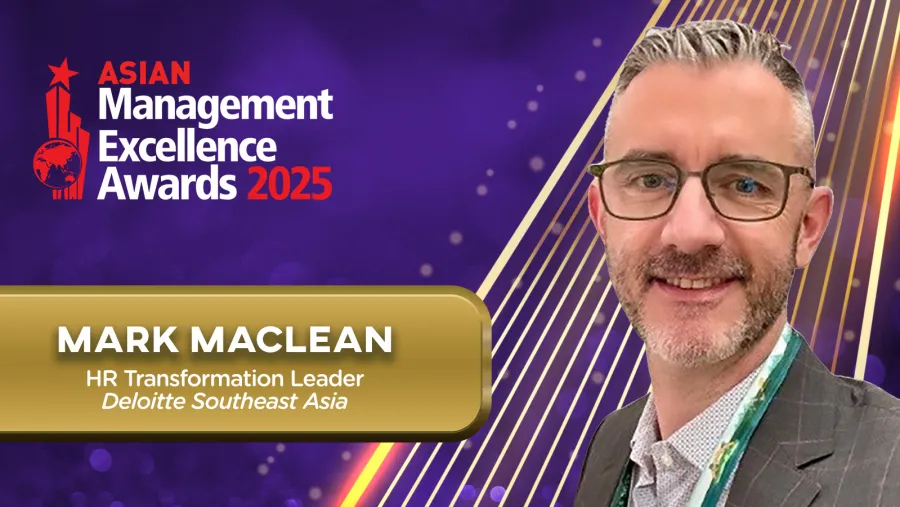
Set a clear HR vision and strategy for successful transformation – Deloitte's Mark Maclean
He highlighted the importance of technology, workforce, and stakeholder engagement for successful HR transformations.
HR transformation is reshaping how organisations manage their workforce, with a focus on integrating technology, standardising processes globally, and aligning HR strategies to drive business success in a rapidly changing environment.
Offering valuable insights is Mark Maclean, HR Transformation Leader at Deloitte Southeast Asia, based in Bangkok with over 30 years of experience in Human Capital across Europe, the Middle East, and Asia Pacific.
Leading a team of 160 professionals, he specialises in Human Resource Transformation Advisory, HR technologies like Workday and SuccessFactors, and large-scale project management. Mark also has deep expertise in HR service delivery models, shared services model design, and the design and implementation of HR strategies and technologies. He is also a member of Deloitte Asia Pacific's Diversity, Equity, and Inclusion Council.
As a judge at the Asian Management Excellence Awards, Mark highlights the importance of balancing global HR standardisation with business needs, leveraging technology, empowering the workforce, and engaging stakeholders to drive successful HR transformations.
What are the most common challenges you’ve encountered in global HR transformations, and how can businesses overcome them to achieve successful outcomes?
Balancing the drive for global harmonisation and tailoring to business needs and resistance to change are the most common challenges in global HR transformations. Organisations that have undergone successful transformations typically establish a unified global design template with key countries, involve key stakeholders, and set up change agents to cascade change, with leadership walking the talk.
Creating a global design template helps drive a standardised solution that fits out-of-the-box requirements. Ensuring only legal and regulatory requirements are captured reduces complexity in the solution design, which enables organisations to fully realise the benefits of a streamlined global HR operating model. Involving key stakeholders helps to get buy-in for the solution, and change agents help to assess resistance on the ground, cascade information, and provide a feedback loop to revise change management activities. This helps ensure everyone is aware and understands the need for change and is upskilled to make the transition to the future state.
With the rapid adoption of digital tools and technologies in HR, how do you foresee these innovations reshaping traditional HR functions over the next decade? What should organisations do today to stay ahead of this transformation?
Similar to how technologies disrupted the audit industry in Asia, where professionals had to shift from bookkeeping to providing advice to mitigate risks and strategic decision-making, the HR field will undergo a similar transformation as the generative artificial intelligence (Gen AI) features in leading cloud HR platforms become advanced.
As talent becomes pivotal in driving the performance of an organisation, organisations should look at ways to empower and enable managers and employees to take ownership of their data and manage the teams' performance. This would alleviate HR time spent on operational and administrative activities to be a better advisor to business leaders on talent. In addition, organisations should also uplift the capabilities of the current HR workforce with training to upskill HR to be better advisors on talent development, retention, and succession planning.
Given your experience designing HR service delivery models, what key factors should organisations consider when implementing cloud-based HR solutions to ensure they not only meet operational needs but also drive long-term strategic value?
Across organisations that have been through the journey of implementing cloud-based HR solutions, three things stand out - a clear North Star for HR services, viewing HR technology architecture from a holistic perspective and building a compelling financial business case for the HR transformation.
A North Star for HR would be the vision of HR that drives the HR strategy and serves as the guiding principle in defining the HR services. To create the North Star, organisations should take an external view by understanding the services that customers of HR would like to enable them to perform better and an inward reflection based on the organisation's culture and talent priorities. Based on the North Star for HR, organisations should take a holistic approach to evaluate the entire HR technology stack and review the product's feature roadmap to identify future product releases and whether that would fit the long-term goals of HR. When starting the HR transformation journey, a financial business case helps define the expected outcomes, costs, including capital expenditures and operating expenditures, and return on investments. The business case helps to build a compelling case for change and enables companies to manage costs and measure the realisation of the benefits to ensure project success.
What are some of the key enablers of a successful HR transformation, and how can organisations ensure these are in place from the start to avoid common pitfalls?
The key enablers to drive a successful HR transformation include setting a clear HR vision and strategy to deliver the desired state of HR, fixing the fundamentals, leveraging the global design process and platform blueprint, and engaging key stakeholders early in the process.
In my conversations with clients in the Asia Pacific region, I typically advise clients to avoid implementing new technologies as a silver bullet to fix existing issues. Instead, they should understand the root causes of the current pain points and fix the fundamentals by addressing any issues in the current structure and driving harmonised processes by leveraging the global design process and platform blueprint built based on leading practices.
To maximise the benefits of implementing cloud platforms, it is crucial to drive standardised solutions by challenging unique requirements and capturing only country regulatory requirements and local laws. Organisations should also focus on engaging key stakeholders at early stages to co-create the future design to reduce resistance and lack of buy-in during the solution roll-out.
With the constant changes in the business environment, how can HR leaders future-proof their teams and services?
The constant changes remind us that it is important to start disrupting by adapting to changes, or we will get disrupted. The advancements in Gen AI present the best opportunity for HR to release time spent on administrative activities and shift the focus to becoming a strategic advisor on talent matters.
To create a safe environment to test and scale new ideas, my advice would be to take a pilot approach by identifying the early adopters that are less complex yet a good representation of your workforce, roll out the solution to test for feedback, and iterate and cascade throughout the organisation. This creates a sandbox environment that makes it safe to test out new ideas, get the buy-in with a successful pilot, and implement solutions that would be a better fit for the organisation.
As a judge for the Asian Management Excellence Awards, what specific qualities or innovations are you looking for in companies that exemplify excellence in management?
Over at Deloitte, the concept of "Digital DNA" was coined from our conversations with digital leaders. We found that the core factors that lead them to build thriving digital businesses are - leadership, talent management, and organisational design.
At the leadership level, organisations that succeed typically have a culture of experimentation, change, and learning to embrace failures. Talent management is around building capabilities for the workforce of the future that focus on cross-disciplinary knowledge and scaling human capabilities like curiosity and empathy. Organisational design is also crucial to relook at how teams are currently structured and how to redesign them so as to drive nimbleness and speed by leveraging augmented capabilities.
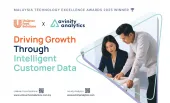









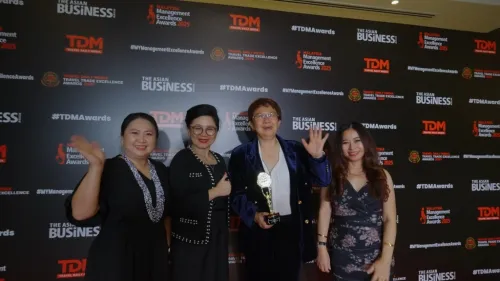
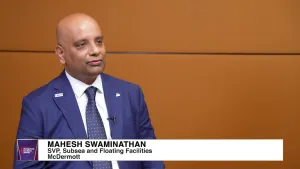
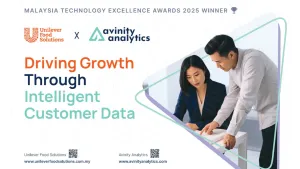
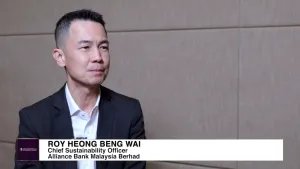
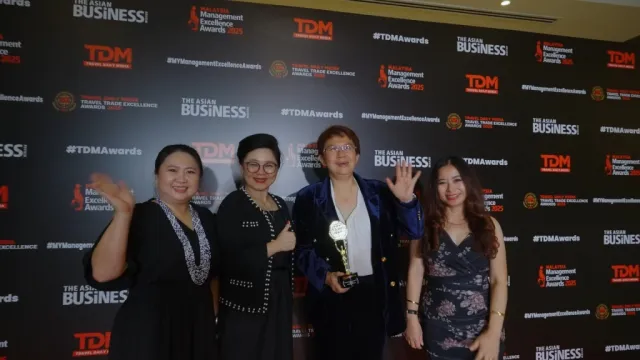

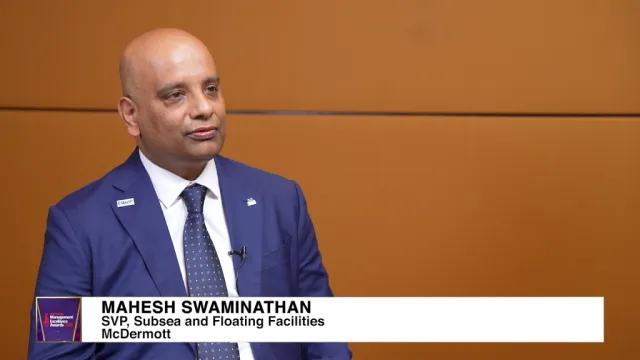


 Advertise
Advertise









